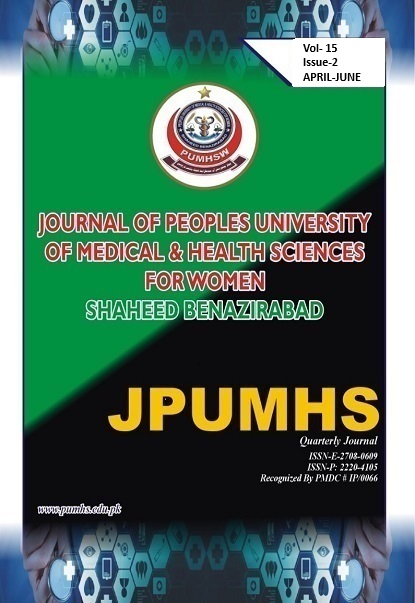A NOVEL SURVEY OF THE TREATMENT TRENDS AND TECHNICAL DETAILS FOR EXTRACORPOREAL SHOCKWAVE LITHOTRIPSY.
J Peop Univ Med Health Sci. 2025:15(2) ,222-232.http://doi.org/10.46536/jpumhs/2025/15.02.645
Keywords:
Extracorporeal shockwave lithotripsy; Pakistan; Survey; UrologistAbstract
OBJECTIVES: This study aims to address that gap by examining the treatment patterns and technical aspects of extracorporeal shockwave lithotripsy (ESWL) in the local clinical context. METHODOLOGY: A descriptive survey-based study was conducted among urologists registered
with the Pakistan Urology Association. Data were collected using a structured, web-based questionnaire, which was distributed via email to registered urologists. To improve response rates, a follow-up reminder was sent after one month. Responses were gathered over a six-month study
period. RESULTS: The study found that 83.19% of urologists had direct access to an ESWL device, with most respondents (n=65) indicating trained technicians and (n=21) indicating medical officers as primarily responsible for operating the unit. Factors influencing ESWL decisions included stone size, location, density, composition, and renal anatomy. Stone density was the most prioritized factor, with 77 urologists using a cut-off value of <1000 Hounsfield units (HU) for eligibility. NSAIDs were the most commonly used analgesia during ESWL sessions. Routine antibiotics prophylaxis was not commonly practiced (n=67), however cephalosporins were preferred when pre-procedure antibiotics were administered. Ureteroscopy (n=81) was the most commonly adopted intervention, and X-ray KUB was the most used radiological method for post-ESWL evaluation. Furthermore, 89 urologists complied with European Association of Urology guidelines in deciding when to offer ESWL as s treatment modality. CONCLUSION: ESWL practices in Pakistan align with international standards, guided by stone characteristics. NSAIDs are commonly used, technicians operate units, but antibiotic use and post-procedure evaluation require standardization and training.
Downloads
Downloads
Published
How to Cite
Issue
Section
License

This work is licensed under a Creative Commons Attribution-NoDerivatives 4.0 International License.




